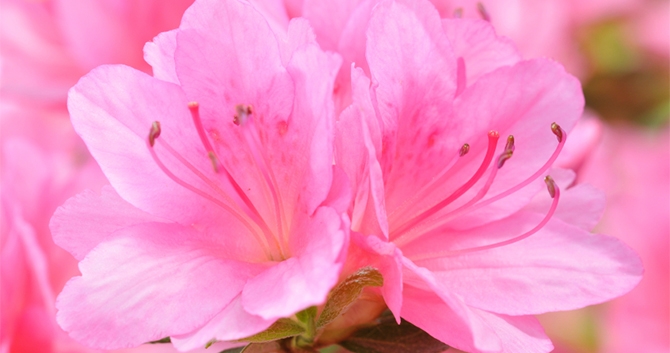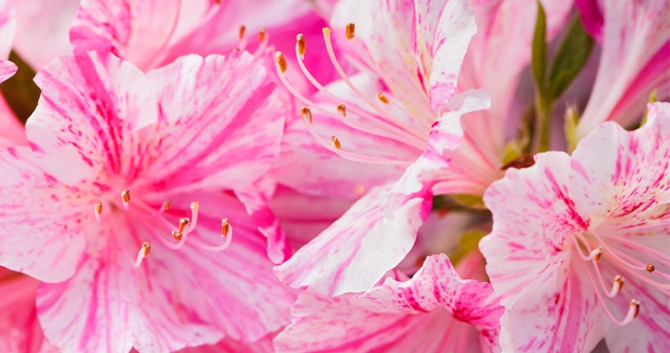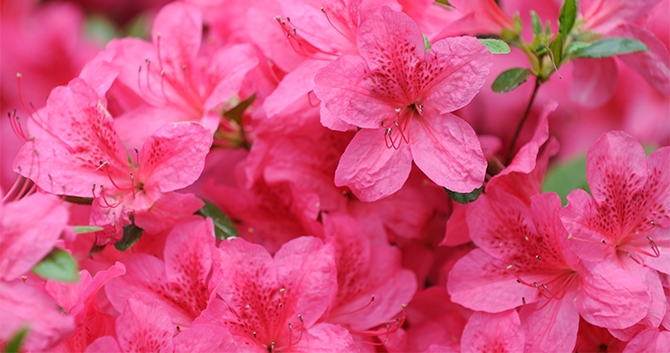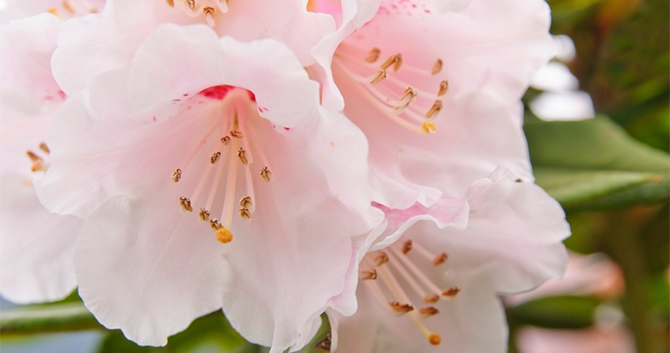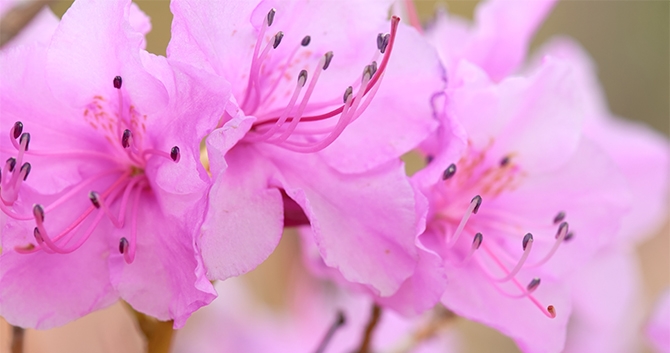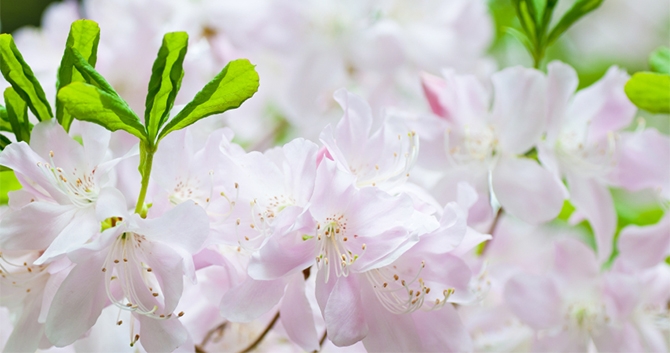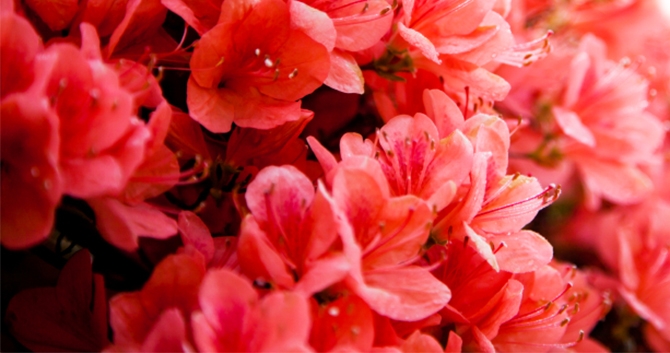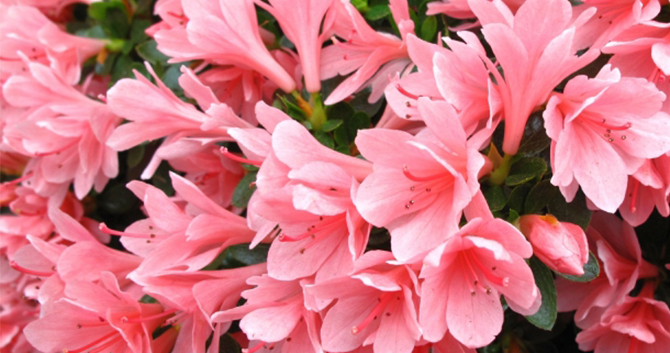The new spring looks are always eagerly anticipated, whether frilly and graceful or sassy and playful. Everywhere you look – New York, London, Milan, Paris, Tokyo - bi-colored ruffles and vibrant solid colors are among the hottest trends.
No, we’re not talking about the runway - we’re talking about azaleas! Azaleas epitomize spring fashion and will brighten your home, garden or both with cheerful shades of white, pink, red, orange and yellow.
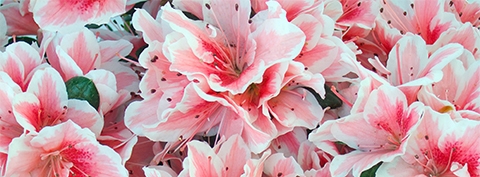 Azaleas are native to the hillsides of Japan
Azaleas are native to the hillsides of Japan
These lightly sweet-scented shrubs are native to the hillsides of Japan, where spring rains moisten woodland soil, which is dry and acidic the rest of the year. Originally cultivated by Buddhist monks, azaleas first appeared in Holland in 1680 and quickly become popular greenhouse plants in Belgium, England, France, and Germany.
Azaleas symbolize womanhood, temperance, fragility & passion. Bloom colors also have specifics meanings as follows:
- • White: healing
- • Yellow: friendship
- • Orange: passion
- • Red: romance, love
- • Pink: femininity, vulnerability
Selecting Plants
When buying florist azaleas, look for plants with tight buds that are just beginning to show color – you might as well enjoy the full flower display in your home. The more unopened buds the better – a good balance is to have about 20 percent of the flowers fully opened.
Care Tips
Azaleas are one of the longest blooming indoor plants you can buy. With proper care, florist azaleas should provide 3 to 4 weeks of color. To maximize the bloom time, follow these simple care tips.
Sunlight: Place your azalea where it will receive bright but indirect light. Find a spot up to four feet way from a north window, up to eight feet from a south window, or up to five feet from an east- or west-facing window. Keep your sheer curtains closed to filter and diffuse the light.
Temperature: Azaleas thrive in cool to average room temperatures. Blooms will last longest when daytime temperatures are 60 to 70 degrees Fahrenheit and nighttime temperatures are 50 to 60 degrees.
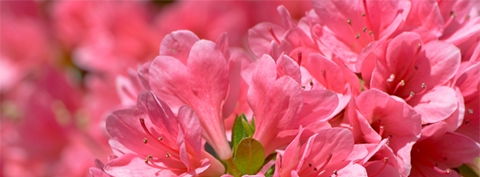 With proper care, florist azaleas should provide 3 to 4 weeks of color
With proper care, florist azaleas should provide 3 to 4 weeks of color
Humidity: Azaleas thrive in high humidity so avoid placing them near heat vents and protect them from drafts. Elevate the humidity by placing them on a saucer of wet pebbles or using a humidifier in the room. Avoid misting as azaleas are susceptible to fungus.
Water: Azaleas need consistently moist soil while blooming to prevent flowers from wilting. Indoor air can sometimes be dry, so check the soil daily and water when the top inch feels dry. Place your pot in the sink and pour water slowly over the surface until it runs out the drainage holes in the bottom. Let it rest for 1/2 hour or so, and repeat with more water to be sure the soil is fully saturated. Let it rest in the sink to be sure it fully drains before returning it to it display location.
Fertilizer: When in bloom, there’s no need to fertilize your florist azalea.
To keep your florist azalea looking its best, be sure to remove any spent flowers.
After Flowering
Once your florist azalea has finished blooming, you’ll see a growth spurt of new leaves. This will understandably encourage you transplant it outside or continue caring for your plant indoors, hoping it will bloom again next year.
When considering your options, keep in mind that azaleas are woody shrubs that aren’t the most practical long-term indoor plants. They need 2 months of cold temperatures (40-55 degrees Fahrenheit) in the fall or winter to produce buds for next year’s flowers so you’ll need to find a spot where they can chill out and then bring them back indoors before the danger of frost.
Transplanting indoor azaleas outside also has some challenges. While botanically the same as garden azaleas, they have been cultivated for decorative display rather than winter hardiness. Many of the best indoor varieties have been developed from strains that need for warm winters, where temperatures remain above 15 degrees Fahrenheit.
You may want to consider enjoying florist azaleas as a seasonal accents, discarding them once the blooms are spent. On the other hand, if you’re motto is “nothing ventured, nothing gained” and you want to transplant your florist azalea to your garden, your best bet is to find the right outdoor location and gradually transition your plant to its new home.
Replanting Tips
After the flowers have faded, prune back your plant to encourage new growth and a fuller form. Azaleas produce flowers at the end of new stem tips, so the branching promoted by pruning helps increase the number of blooms.
Once the danger of frost has passed, you can begin to transition your azalea to its new location. Find a spot with at least 3 hours of direct sun in the morning and shade in the afternoon. If the winters are very cold, also look for an area sheltered from the wind.
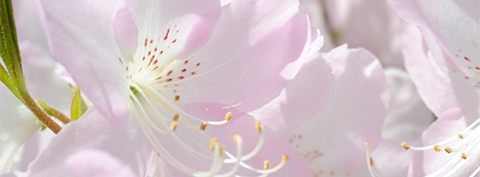 Azaleas are the flower for the zodiac sign of Sagittarius
Azaleas are the flower for the zodiac sign of Sagittarius
Set your azalea outdoors during the day in a spot with filtered sunlight and bring it back indoors at night. Over the course of a week or so, gradually increase the amount of sun and wind exposure, and your azalea will be ready for planting. When you’re ready to plant, simply follows these steps:
- Dig a hole twice as wide and just as deep as the root ball.
- Gently remove the pot and loosen the roots, especially if the plant is pot-bound and very little of the soil is visible.
- Place the plant in the hole and fill in with ½ of the soil and water gently. After the water drains, fill in the rest of the way, using the surplus soil to create a low mound in a ring around the edge of the hole. This ‘moat’ will help guide the water to your new plant’s roots as it establishes.
- Mulch well around the plants to help keep the soil consistently moist and weed-free. To prevent pest and disease problems, never mound mulch directly against plant stems.
Troubleshooting
Although florist azaleas are robust and easy to maintain, they may show signs of stress without proper care. Here are some simple steps to remedy potential problems:
Shriveled Leaves: If leaves start to wither, your plant is probably too dry. Soak the pot and mist the leaves to restore moisture. Other possible causes are too much direct sunlight or high temperatures. Try relocating the plant to a cooler spot where it gets lower light. If more than one-third of the leaves are lost, the plant will not be able to recover and should be discarded.
Yellow Leaves: This is a sign that the plant is either getting too much lime or too little iron. Since it’s hard to diagnose the cause, fertilize with azalea food to provide iron and water with a mixture of two tablespoons vinegar to one quart water to neutralize the lime and raise the acidity.
Brown Leaves: This may be a symptom of over-watering. Too much water is the number one problem for indoor plants, causing roots to rot or creating fungi in the soil. Resist the urge to saturate your azalea. Gently remove your plant from its pot. If the roots are brown or mushy, you’ll have to discard it and replace it with a healthy plant.

